Of course, in a big city, all footwear is subject to rapid wear and tear, but if you choose your new pair of shoes, boots or ankle boots more carefully, take good care of them and pay attention to your gait, the shoes will keep their good looks for much longer.

- A look at the soles of our shoes can tell us a little more about our health.
- What the wear indicator should look like (main photo)
- Video
- How to Repair a Running Shoe: Heel Repair
- The sole has a profile on the heel
- The sole wears evenly on the inside
- Wear under the toe of your shoe
- What should you do if the inside of your shoes keeps rubbing?
- Stones on the heel
- What does a worn heel tell psychologists?
- The most durable materials
- Polyurethane (PU) soles
- PVC soles
- Tunit soles
- Can sneakers be stretched at home?
- If the heels of your sneakers are scuffed
- Cut off the spores
- Buy the correct shoe size.
- Under the thumb on the insole
- Between the toes on the insole
A look at the soles of our shoes can tell us a little more about our health.
Choosing tight or uncomfortable footwear can lead to a variety of health problems that affect not only our feet, but also our heads and hearts. To identify possible health problems while they aren't too serious, you can simply look at your shoes. They reveal a lot more about the person wearing them than we think.
Experts say that depending on the wear and tear on the sole, a diagnosis can be made. Here are some variations of what the sole looks like.
What the wear indicator should look like (main photo)
The sole of a shoe cannot last forever and will definitely wear out. However, where this wear occurs is important. The pattern of a healthy shoe shows that it will wear at the toe or heel. In this case, the wear on the outside is minor and barely noticeable. However, if there are signs of wear on the heel and toes and the left side of the sole is worn, this is a sign of flat feet. Many people do not pay attention to this condition, but it can lead to various problems.
During puberty, flat feet can also lead to poor posture, and this can be the start of the development of scoliosis. This happens because the soft tissues that hold the joints in the correct position are stretched too far. This leads to an abnormal redistribution of loads. This leads to back discomfort and also various types of injuries. Sometimes this can also lead to persistent, severe headaches. However, an orthopedist can help solve this problem and choose the right orthopedic shoes and insoles.
Learning the alphabet: How to get your child excited about writing
The WHO has noted signs of earlier spread of COVID in 2019.
Husband will appreciate: a selection of stylish and cozy looks for your home
A worn heel can also indicate the early stages of flat feet. If the sole is severely worn or wrinkled, this is an indication that you should consult an orthopedist.
There is also a longitudinal flatfoot. This is manifested by the formation of a thickening at the base of the big toe bone. If the thickening forms on the surface of the shoe, this indicates a serious problem. Sometimes young children can develop flat feet and suffer from it throughout their lives.
Video
- Special silicone stickers on the back of the shoe can help prevent blisters;
- Soften stiff heels with a hammer on the inside and lightly tap the back of a leather shoe;
- Place a towel soaked in warm water inside the shoe and leave it there for 20-30 minutes. After this time, apply pharmacy glycerin to the back, which has been softened with water, and leave it to act until the next morning. If this treatment does not help the first time, it is recommended to repeat it;
- If the shoes have not been properly cared for for a long time, the leather can dry out and chafe the heels. To solve this problem, lubricate the heel with baby cream, grease or soap and leave it overnight;
- If the back seam of your running shoe is rubbing, contact a shoe repair shop. The shoe repair shop will place a patch of soft material in this area. The shoe can also be stretched for length, which also contributes to a comfortable fit.
How to Repair a Running Shoe: Heel Repair
Changes that occur to the heel over time include: B. cracked material, protruding inner padding and discomfort due to deformation. To repair a cracked heel, you must first trim the cracked edges of the padding. Then a piece of thin, soft leather is selected. This is cut into a piece that resembles a small horseshoe. This piece is treated with shoe glue (take special care to dab the edges).
The most important step is to carefully close the 'injured' area of the butt and then smooth it with your fingers to avoid wrinkles. Then place an appropriately sized object inside and press the material firmly against the heel for several hours to keep the patch in place.
The sole has a profile on the heel
This is a common problem with clubfoot: initially the foot is on the heel, but for balance purposes the foot turns inward and falls to the floor with the toes pointing inward. The structure of the foot cannot be corrected in adulthood, but orthotics can help correct gait. However, this is a purely aesthetic problem and not a health risk.
It is a common situation in overweight people. By tilting their foot slightly outward, they find it easier to walk, especially if it is not mild obesity but obesity. Posture and gait return to normal with weight loss.
The sole wears evenly on the inside
If the inside of the shoe wears out, this is probably due to abnormal posture and therefore a gait pattern with an abnormal center of gravity. When walking, the foot is supported on the inner arch, which is caused by a stooped posture. It is worth visiting an orthopedist to correct your posture and gait before you develop problems with the knee and pelvic joints.
In any case, you should see an orthopedist if your shoes don't last long, are splitting on your feet, and don't wear as well as they should. Photo: Getty Images
Online publication THE VOICEMAG
Founder of The Fashion Press LLC: 119435, Moscow, Bolshoy Savvinsky per. 6, floor 3, room II;
Address of the editorial office: 119435, Moscow, Bolshoi Savvinsky per. 12, bl. 6, floor 3, room II;
Editor-in-Chief: Velikina Ekaterina Sergeevna
Editorial email: [email protected]
Editorial phone number: +7 (495) 252-09-99
Information Product label: 16+ The online edition is registered with the Federal Service for Supervision of Communications, Information Technologies and Mass Media, registration number and date of registration decision: Series EL No. FS 77 – 84177 dated November 9, 2022.
© 2007 – 2023 Fashion Press Ltd.
By posting material on the website you grant Fashion Press Ltd. the non-exclusive right to use, reproduce, distribute, create derivative works from, and display and make available to the public the Material.
Wear under the toe of your shoe
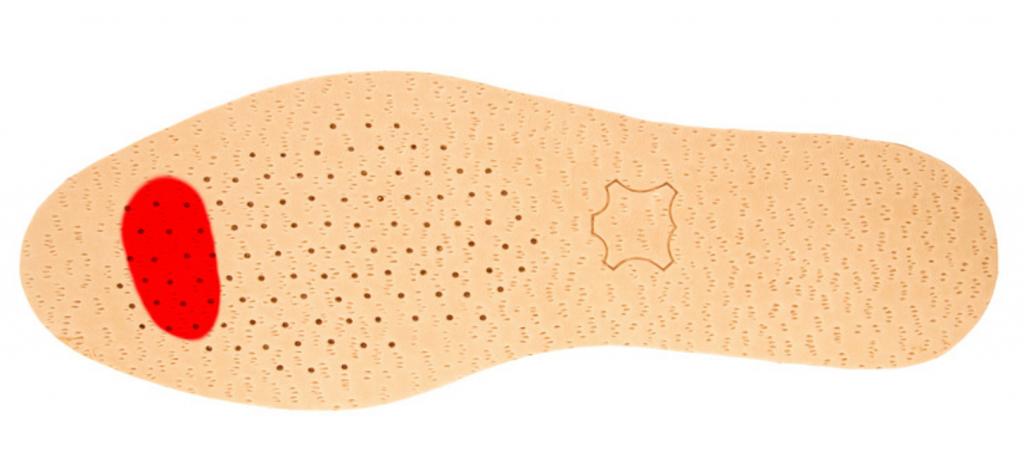
Severe wear under the toes is a sign that a woman is wearing high heels. According to research, wearing uncomfortable high-heeled shoes every day is a very important factor that leads to various foot problems. It contributes to the development of osteoarthritis. According to orthopedists, the most comfortable and wearable shoes should have a heel of 2.5 to 4 cm. Shoes with a heel higher than 7 cm should not be worn.
What should you do if the inside of your shoes keeps rubbing?
1) You don't wash the inside of the shoes, including the insole.
2. You don't wash your feet thoroughly enough.
3. They 'forget' to wear clean socks and sometimes wear dirty socks or no socks at all, which is not hygienic at all.
Bacteria that multiply through sweat are the only cause of bad breath. The bacteria simply 'eat' the inside of the shoe and decompose the lining. Since the thumb, toes and heel put the greatest strain on the material when worn, this leads to these unpleasant consequences.
Of course, these are not the only reasons - irregular growths such as protruding bones, thickenings on the toes, heel spurs cause excessive pressure on the shoe material, which of course the shoe manufacturer can never foresee.
Stones on the heel
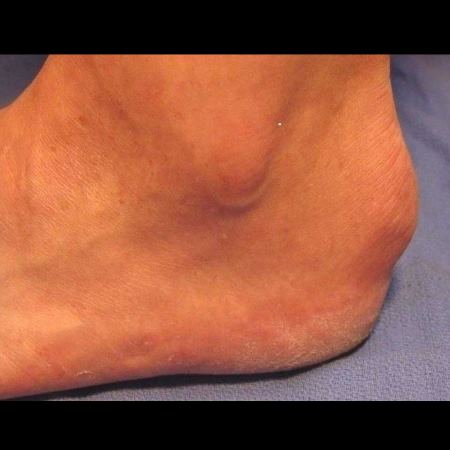
If you have such growths on your feet – consult your surgeon, by 2018 all these 'anomalies' will be successfully removed. But for those who, for whatever reason, do not want to undergo surgery, there is a solution - natural suede.
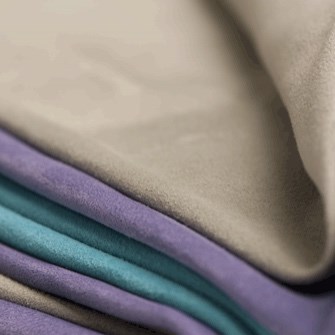
Why natural suede? Quite simply – it is the most durable and long-lasting material for shoes. You have to be a terrible slouch to manage to put your shoes on and wipe the suede from the inside down to the holes.
Something like this looks like a piece of real leather (suede) that becomes the interior patch for your sneakers.

The inner patch should have rounded edges and a 'seamless transition' so that it is not noticeable when worn and does not pinch or squeeze the foot.

The patch should be stuck where it is needed. If the design of the sneaker allows, the patch should also be sewn to make it more durable, but you must first agree with the master that you have picked up threads in the tone of the upper. However, no one wants to spoil the look of the shoes with colored threads that stand out from the rest.
Repairing the paragraph is done in the same way. The insole made of natural suede is glued and sewn to the textile lining.
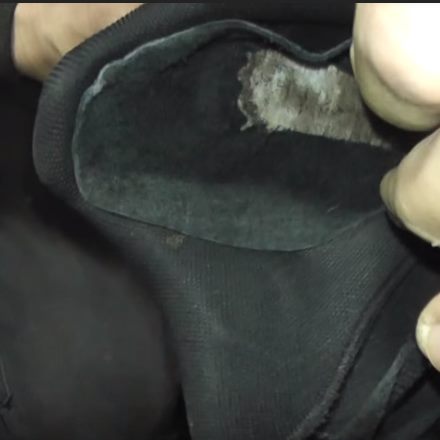
Don't expect that if all your shoes are worn out in the same place, other new shoes won't be the same. Immediately after purchasing a new pair, boldly go to a regular repair shop if you want your shoes to serve you for many years. This treatment does not cost a lot of money (around 10-15 BYN plus or minus, depending on the level of the workshop). And of course, you shouldn't forget to care for your shoes in a timely manner.
What does a worn heel tell psychologists?
According to numerous observations of experts, the place where a worn spot sits can indicate a person's character and character traits.
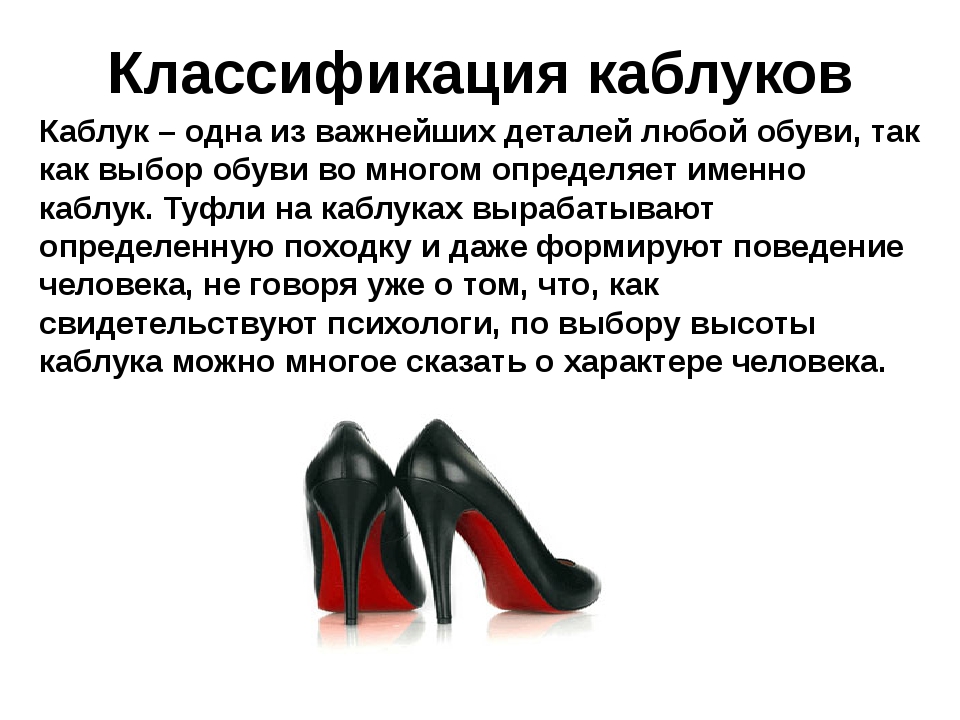
- Likewise, a worn sole and heel can to sue. A reliable, energetic person... with a calm, balanced temperament. Such persons are ideal for family life..
- Abrasions on the outer edge shows by an exaggerated, driven. A person who has leadership qualities, but not without a touch of adventurism.
- abrasions on the inside shows weak-willed people.A person who prefers to stay on the sidelines and doesn't show initiative.
There is so much information that can be gleaned from a close look at ordinary paragraphs.
The most durable materials
Polyurethane (PU) soles

Polyurethane is a light, porous, abrasion-resistant, flexible and highly shock-absorbing material with good thermal insulation properties. Polyurethane soles are light and flexible and are therefore used in shoes where these properties are particularly important.
Disadvantages: The porous structure of polyurethane is also a disadvantage. It ensures that PU soles have difficulty adhering to snow and ice, for example, so that winter boots with PU soles are very slippery.
PVC soles
PVC soles are durable, resistant to aggressive environmental conditions and easy to manufacture. They are often used in slippers and children's shoes and in the past were particularly widespread in special shoes, as mixing PVC with rubber gives it properties such as oil and gasoline resistance.
Disadvantages: PVC is used only in the manufacture of everyday shoes for autumn or spring, as the material has a high weight, low frost resistance and cannot withstand temperatures below -20 degrees.
Tunit soles

Tunit is a mixture of rubber and leather fibers, hence the second name of the material. In terms of appearance, hardness and plasticity, Tunit soles are similar to leather soles, but are easier to handle: they hardly wear out and do not get wet. These soles are easily dented, giving them a little more grip than leather.
Disadvantages: However, shoes with Tunit soles are very slippery due to the high rigidity of the material. For this reason, Tunit is only used in the production of summer and spring/autumn shoes using the gluing method.
Can sneakers be stretched at home?
To stretch tight sneakers at home, the following tips are suitable:
- Use special products for stretching sports shoes. You can buy them at cleaning supply stores or shoe stores. Remember to read the instructions so you choose the right product for the material of your shoes. This method has one major drawback: there is no way to resize if you've gotten too big.
- Stuff your sneakers tightly with wet, crumpled newspaper and leave them overnight. In the morning, remove the paper and dry the shoes in natural conditions. Then wear the shoes at home until you find a comfortable size;
- The gentlest way to introduce sneakers is to put a patch on the 'problem areas' (e.g. the heels) and wear them at home for a few days;
- Moisten the inside of the shoes with alcohol and wear them with thick socks at home. Although this method may be uncomfortable in summer, it is still very effective;
- Place a sealed zip-lock bag inside the sneakers and fill it with water. Then place the boots with the bag in the freezer. After a day, take out the boots, let the ice thaw at room temperature and remove the bag;
- Fill the canvas shoes with boiling water and wear them until they are completely dry;
- If the shoes pinch at the back, lubricate them with soapy water or castor oil and wear them with socks at home for a few days;
- If your sneakers pinch your toes, turn on a heat gun and heat the area for a few minutes. Immediately afterwards, put on your shoes and walk around the house until the sneakers cool down;
- Tight sneakers can be stretched with hot steam. Hold the shoes over a pot of boiling water or steam them and put them on immediately. Stretch the shoe until it cools down sufficiently. Information. These inexpensive home remedies can help you with more than just grinding shoes. If your sneakers are too slippery on the gym floor, rub the soles with rosin before putting them on.
If the heels of your sneakers are scuffed
Scuffed heels are a common symptom of newly purchased shoes. To avoid carrying around a pack of Band-Aids to seal the abrasions, you should address the problem as soon as it occurs. To do this, you can use the following tips:
- Special silicone stickers on the back of the shoe can help prevent blisters;
- Soften stiff heels with a hammer on the inside and lightly tap the back of the leather shoe;
- Place a towel soaked in warm water inside the shoe and leave it there for 20-30 minutes. After this time, apply pharmacy glycerin to the back, which has been softened with water, and leave it to act until the next morning. If this treatment does not help the first time, it is recommended to repeat it;
- If the shoes have not been properly cared for for a long time, the leather can dry out and chafe the heels. To solve the problem, lubricate the heel with baby cream, grease or soap and leave it overnight;
- If the back seam of your running shoe chafes, contact a shoe repair shop. The shoe repair shop will place a patch of soft material in this area. The shoe can also be adjusted in length to ensure a better fit.
Cut off the spores
The soles of your sneakers will wear out faster because you don't cut off the 'spurs' on the heels. This is what the claws on the heels of birds used to be called. Think of this as one of the most popular tips on Reddit. Do they have different physiology?
The best answer came from Sk8-Hi66, who has been dealing in shoes for eight years. The comment was so comprehensive that I divided it into three paragraphs. Here is the quote about quality:
Nylon is used on the back of your sneakers. This is purely synthetic. It's just a terrible material for the back. You need a shoe with a stiff heel. This requires double stitching or gluing. This is not possible with nylon. The ideal material for the heel is leather.
Buy the correct shoe size.
Another reason could be that the shoe is a bit too big or too small. Thanks to competition, manufacturers are producing sneakers in increments of up to a quarter size. If you buy a shoe half a size larger, the problem goes away. Unfortunately, you don't always have this choice.
Not everyone is happy with the standard shoe shapes. According to Sk8-Hi66, the question's author, this may be the case. The shape of the heel is not so clearly defined. One could try to find models with a different contour or use a shoe with rear lacing, like in the picture.
Under the thumb on the insole

If the bulge under the big toe rubs against the sole, it is worth checking the quality of the shoe. Your shoes may be pinching you. The narrow toes press on the toes and the toes begin to 'kick' each other. The result is a foot deformity with subsequent curvature of the spine.
The displaced vertebrae press on the nerve endings. This happens not just in the feet, but throughout the body. Painful symptoms occur in the heart, chest and head. At first you won't associate these alarm bells with your shoes. Therein lies the danger of this position.
Between the toes on the insole

A rare defect, but abrasions also occur in this area. It is possible that it is a hammertoe deformity. This pathology usually affects the second toe and leads to a change in its original shape. The toe becomes hammertoe-like. The main cause of this defect is wearing shoes that do not fit you (are too tight). Check your sneakers, shoes and footwear. Get rid of anything that could potentially be harmful.
Soles and insoles wear out over time - an unstoppable process. However, this wear must be symmetrical and evenly distributed. Heel and toe scuffs mean you have healthy feet and nothing to worry about. You just have to pay attention to your shoes and not sacrifice practicality in search of fashion trends.
Read more:- Rubbing heel in shoes.
- What is the heel of a shoe called?.
- How to break in a stiff heel.
- What to do if the sneakers pinch in the heel?.
- The sole is worn.
- Mortar for soles.
- What to do if the back of the shoe rubs against the heel?.
- The right footwear for hiking.
